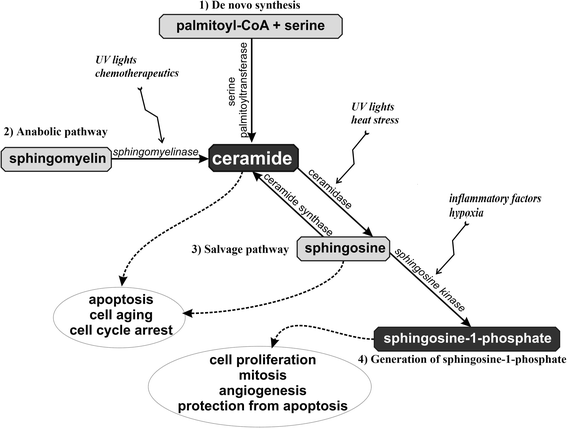Sphingolipids in cardiovascular diseases and metabolic disorders
- PMID: 26076974
- PMCID: PMC4470334
- DOI: 10.1186/s12944-015-0053-y
Sphingolipids in cardiovascular diseases and metabolic disorders
Abstract
Many investigations suggest the pivotal role of sphingolipids in the pathogenesis of lifestyle diseases such as myocardial infarction, hypertension, stroke, diabetes mellitus type 2 and obesity. Some studies suggest that sphingolipids are important factors in cellular signal transduction. They serve as biologically active components of cell membrane and are involved in many processes such as proliferation, maturation and apoptosis. Recently, ceramide and sphingosine-1-phosphate have become the target of many investigations. Ceramide is generated in three metabolic pathways and many factors induce its production as a cellular stress response. Ceramide has proapoptotic properties and acts as a precursor for many other sphingolipids. Sphingosine-1-phosphate is a ceramide derivative, acting antiapoptotically and mitogenically and it is importantly involved in cardioprotection. Further research on the involvement of sphingolipids in cellular pathophysiology may improve the prevention and therapy of lifestyle diseases.
Figures
References
-
- Tirodkar TS, Voelkel-Johnson C. Sphingolipids in apoptosis. Exp Oncol. 2012;34:231–42. - PubMed
Publication types
MeSH terms
Substances
LinkOut - more resources
Full Text Sources
Other Literature Sources
Medical



